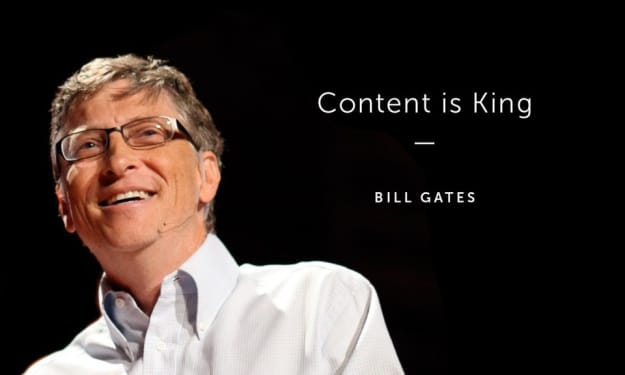The Transformative Power of Education
A Pathway to a Better Future

## The Transformative Power of Education: A Pathway to a Better Future
Education is often heralded as the cornerstone of personal and societal development. It empowers individuals with knowledge, skills, and critical thinking abilities, which can significantly enhance their quality of life and enable them to contribute meaningfully to their communities. This article explores the multifaceted impact of education, its challenges, and the ways it can be reformed to better serve future generations.
### The Importance of Education
#### Personal Development
Education fosters personal growth and development by broadening an individual's perspective and understanding of the world. It equips people with the necessary tools to analyze information, solve problems, and make informed decisions. The benefits of education extend beyond academic knowledge, including:
1. **Critical Thinking and Problem Solving:** Education encourages individuals to question assumptions, think critically, and solve complex problems. These skills are essential in both personal and professional contexts.
2. **Communication Skills:** Through various forms of educational activities such as writing essays, participating in debates, and giving presentations, students enhance their ability to express ideas clearly and effectively.
3. **Self-Discipline and Time Management:** Balancing coursework, extracurricular activities, and personal responsibilities teaches students important skills in self-discipline and time management.
4. **Emotional and Social Development:** Education also plays a vital role in socialization, helping individuals develop empathy, ethical values, and the ability to work collaboratively with others.
#### Economic Empowerment
Education is a powerful driver of economic growth and prosperity. It opens up employment opportunities, enhances productivity, and promotes innovation. Some economic benefits of education include:
1. **Increased Earning Potential:** Higher levels of education generally lead to better-paying jobs and increased earning potential over a lifetime.
2. **Reduced Poverty:** Education is a critical tool in breaking the cycle of poverty. It enables individuals to secure stable employment and improve their living standards.
3. **Economic Growth:** An educated workforce is more productive and capable of driving economic growth and innovation. Countries with higher education levels tend to have stronger economies.
#### Social Benefits
Education contributes to societal well-being by promoting social cohesion, reducing inequalities, and fostering democratic values. Some key social benefits include:
1. **Social Mobility:** Education can level the playing field by providing opportunities for individuals from all backgrounds to succeed.
2. **Reduced Crime Rates:** Higher education levels are associated with lower crime rates. Educated individuals are more likely to have stable employment and less likely to engage in criminal activities.
3. **Improved Health Outcomes:** Education promotes better health literacy, leading to healthier lifestyle choices and improved overall health.
4. **Civic Engagement:** Educated citizens are more likely to participate in civic activities, vote, and engage in community service, strengthening democratic processes and community bonds.
### Challenges in Education
Despite the numerous benefits, the education system faces significant challenges that hinder its effectiveness and accessibility.
#### Inequality in Access
Educational opportunities are not evenly distributed, leading to disparities in access and outcomes. Factors contributing to educational inequality include:
1. **Socioeconomic Status:** Children from low-income families often face barriers to education, including inadequate resources, less experienced teachers, and limited access to extracurricular activities.
2. **Geographical Location:** Rural areas frequently lack the infrastructure and resources available in urban centers, resulting in lower educational attainment.
3. **Gender Disparities:** In many parts of the world, gender biases and cultural norms limit educational opportunities for girls.
4. **Disabilities:** Students with disabilities often face significant challenges in accessing quality education due to a lack of appropriate facilities and support services.
#### Quality of Education
The quality of education varies widely, affecting students' learning outcomes and future prospects. Key issues affecting educational quality include:
1. **Teacher Quality:** Effective teaching is crucial for student success. However, many schools struggle with teacher shortages, inadequate training, and low morale.
2. **Curriculum Relevance:** Curricula that are outdated or not aligned with the needs of the modern world fail to prepare students for future challenges.
3. **Assessment Methods:** Traditional assessment methods, such as standardized testing, may not accurately reflect students' abilities or potential, leading to a narrow focus on rote learning.
4. **Infrastructure and Resources:** Many schools, particularly in low-income areas, lack basic infrastructure and resources, such as libraries, laboratories, and technology.
#### Financial Constraints
The cost of education can be prohibitive for many families, limiting access to quality education. Financial barriers include:
1. **Tuition Fees:** High tuition fees for private schools and higher education institutions can exclude students from low-income backgrounds.
2. **Hidden Costs:** Additional expenses, such as textbooks, uniforms, and transportation, can also pose significant barriers.
3. **Public Funding:** Insufficient public funding for education leads to overcrowded classrooms, underpaid teachers, and inadequate facilities.
### Reforming Education for the Future
To overcome these challenges and ensure that education fulfills its transformative potential, comprehensive reforms are necessary. Key areas for reform include:
#### Promoting Equity in Education
Ensuring that all students have access to quality education, regardless of their background, is crucial for promoting social justice and economic development. Strategies to promote equity include:
1. **Targeted Funding:** Allocating additional resources to schools in disadvantaged areas can help bridge the gap in educational opportunities.
2. **Inclusive Policies:** Implementing policies that promote gender equality and support for students with disabilities ensures that all students can succeed.
3. **Community Engagement:** Involving communities in the education process can help address local needs and foster a sense of ownership and accountability.
#### Enhancing Teacher Quality
Teachers are the backbone of the education system, and their quality directly impacts student outcomes. Strategies to enhance teacher quality include:
1. **Professional Development:** Providing ongoing training and development opportunities helps teachers stay current with best practices and new teaching methods.
2. **Attractive Compensation:** Competitive salaries and benefits can attract and retain high-quality teachers.
3. **Supportive Working Conditions:** Creating a supportive work environment, with adequate resources and reasonable class sizes, helps teachers perform at their best.
#### Modernizing the Curriculum
A modern, relevant curriculum is essential for preparing students for the future. Strategies to modernize the curriculum include:
1. **Emphasizing Critical Thinking:** Encouraging critical thinking, creativity, and problem-solving skills prepares students for the complexities of the modern world.
2. **Incorporating Technology:** Integrating technology into the curriculum helps students develop digital literacy and prepares them for a technology-driven future.
3. **Global Awareness:** Teaching students about global issues and diverse cultures fosters empathy and global citizenship.
#### Improving Assessment Methods
Assessment methods should accurately reflect students' abilities and potential, and encourage a broader range of skills. Strategies to improve assessment include:
1. **Formative Assessments:** Using formative assessments to provide ongoing feedback helps students identify areas for improvement and supports their learning process.
2. **Project-Based Learning:** Incorporating project-based learning and assessments encourages deeper understanding and the application of knowledge.
3. **Holistic Evaluation:** Evaluating students based on a combination of academic performance, creativity, critical thinking, and social skills provides a more comprehensive picture of their abilities.
#### Increasing Financial Support
Making education affordable and accessible requires increased financial support from both public and private sectors. Strategies to increase financial support include:
1. **Public Investment:** Governments should prioritize funding for education, ensuring that all schools have the necessary resources to provide quality education.
2. **Scholarships and Grants:** Providing scholarships and grants for students from low-income families can help reduce financial barriers to education.
3. **Partnerships with Private Sector:** Collaborating with the private sector can provide additional resources and opportunities for students, such as internships and mentorship programs.
### Conclusion
Education is a powerful tool for personal and societal transformation. By promoting personal development, economic empowerment, and social well-being, education can pave the way for a better future. However, significant challenges remain, including inequality in access, quality disparities, and financial constraints.
To address these challenges, comprehensive reforms are needed. Promoting equity, enhancing teacher quality, modernizing the curriculum, improving assessment methods, and increasing financial support are key strategies for ensuring that education fulfills its transformative potential. By investing in education and prioritizing these reforms, we can create a more just, prosperous, and sustainable future for all.
About the Creator
Enjoyed the story? Support the Creator.
Subscribe for free to receive all their stories in your feed. You could also pledge your support or give them a one-off tip, letting them know you appreciate their work.





Comments
There are no comments for this story
Be the first to respond and start the conversation.